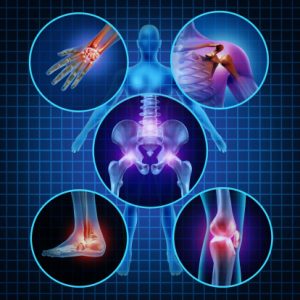 The term polyarthritis is used to describe a condition in which more than five joints are affected at the same time. They may be caused by various other arthritic conditions such as rheumatoid arthritis, psoriatic arthritis, and a variety of alphavirus-related forms of arthritis including Chikungunya.
The term polyarthritis is used to describe a condition in which more than five joints are affected at the same time. They may be caused by various other arthritic conditions such as rheumatoid arthritis, psoriatic arthritis, and a variety of alphavirus-related forms of arthritis including Chikungunya.
The symptoms of polyarthritis present much in the same fashion as the arthritic conditions it is associated with. These include symptoms of redness, swelling, and pain, with or without inflammation.
What causes polyarthritis?
Advertisement
When evaluating various polyarthritis causes for a diagnosis, it is important for trained professionals to consider many factors, including the number of joints affected, whether the joints are inflamed, other symptoms aside from joint pain, and whether the affected joints are asymmetric or symmetric. This will provide important clues to the possible underlying cause, leading to a proper diagnosis and effective treatment as a result.
There are various causes of polyarthritis, some even being the result of viral infections. Causes of polyarthritis include:
- Osteoarthritis
- Cancer
- Still’s disease
- Gout
- Sarcoidosis
- Whipple’s disease
- Lupus
- Rheumatoid arthritis
- Chikungunya (viral)
- Ross River viruses
Polyarthritis symptoms
As mentioned, there are many different causes of polyarthritis, each of which may have specific signs and symptoms that may help distinguish one from another. Of all the presenting symptoms of the possible conditions, the presentation of arthritis affecting five or more joints simultaneously must be present for a polyarthritis diagnosis, with the patient’s medical history and physical examination providing additional clues.
It is important to note that not all patients will experience the same symptoms, even with the typical signs of arthritis. For example, some patients may have only joint pain, while others may feel only warmth in their joints. Various viral causes may also contribute to a delayed onset of symptom presentation, with incubation period of polyarthritis being as little as three days or as long as three months. An initial presenting symptom could be, for example, headache, with the common signs of polyarthritis not appearing until much later.
Common symptoms of polyarthritis include:
- Pain with or without inflammation
- Five or more joints affected at the same time
- Redness of joints
- Warmth over joints
- Joint swelling
- Fever
- Unintentional weight loss
The bottom line is that a diagnosis of polyarthritis largely depends on the number and type of joints affected, whether inflammation is present, whether joint involvement is symmetric or asymmetric, and any other symptoms not related specifically to the joints.
Different health conditions that are associated with polyarthritis
Acute non-inflammatory polyarthritis includes:
- Hemoglobinopathy
- Amyloid arthropathy
Chronic non-inflammatory polyarthritis includes:
- Osteoarthritis
Acute inflammatory polyarthritis includes:
- Viral arthritis
- Serum sickness
- Drug-induced arthritis
- Connective tissue disease
- Rheumatic fever
- Palindromic rheumatism
Chronic inflammatory polyarthritis includes:
- Rheumatoid arthritis
- Undifferentiated polyarthritis
- Inflammatory osteoarthritis
- Mixed connective tissue disease
- Lupus
- Scleroderma
- Polyarticular juvenile idiopathic arthritis
- Adult Still’s disease
Diagnosing polyarthritis
The doctor will typically perform a full medical history and physical exam. This will provide the clues necessary to determine the most likely cause. When suspicion for a particular diagnosis is achieved, medical imaging in the form of X-rays or CT may prove useful in providing evidence to support the diagnosis. Other screening tests include blood tests looking for disease markers, physical exams checking for skin abnormalities, and muscular activity testing.
Treating polyarthritis
Knowing that polyarthritis isn’t a specific disease in itself but rather a term used to describe arthritis that affects five joints or more, one can surmise that not one treatment will be effective to treat all the symptoms that present with polyarthritis. Viral conditions leading to the condition typically subside within six weeks, with symptom control being the primary form of treatment. Polyarthritis treatment typically include drugs that reduce inflammation and may include one or a combination of the following:
Nonsteroidal anti-inflammatory drugs: Reduce inflammation by blocking the actions of prostaglandins, which are substances that play a role in producing inflammation. They are also effective in reducing pain. Side effects include gastrointestinal upset and stomach ulcers.
Corticosteroids: Help reduce inflammation by suppressing the immune response. This form of treatment works especially well in autoimmune diseases such as systemic lupus erythematosus. These drugs tend to increase the likelihood of osteoporosis, leading doctors to prescribe additional medications such as bisphosphonates to prevent bone loss.
Disease-modifying anti-rheumatic drugs (DMARDs): Designed to alter the course of various diseases that may cause polyarthritis and can take many weeks to take effect. DMARDs work by suppressing the immune system, possibly leading to other conditions caused by infection.
Anti-TNF (tumor necrosis factor) drugs: Tumor necrosis factor induces inflammatory responses in many types of arthritis, so anti-TNF drugs block this inflammation. Unfortunately, this treatment comes with many side effects such as transfusion reactions, fever, chills, body aches, headache, and increased susceptibility to infection.
Not all treatment plans rely solely on drugs. Incorporating a proper workout regime can help you reduce pain and stiffness due to polyarthritis. The following exercises can be helpful:
Advertisement
Stretching: Helps increase one’s range of motion and can be performed almost anywhere.
Swimming: Also called hydrotherapy, this form of exercise helps reduce strain on joints and soothe muscles in the regions affected.
Tai Chi: An ancient Chinese martial art that has been known to provide many health benefits.
